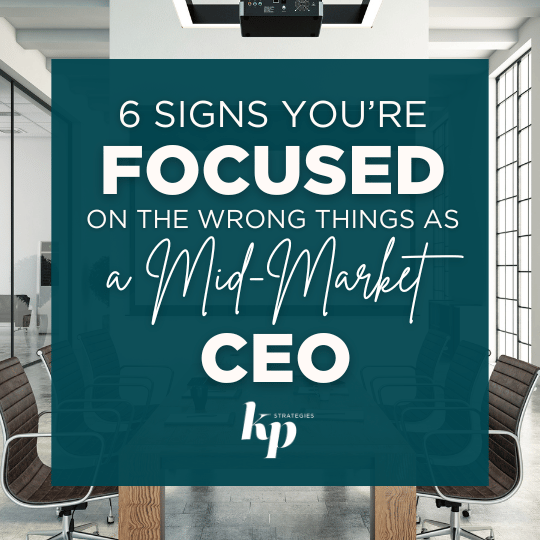
The Silent Killer: Lack of Alignment
Do you have a silent killer lurking in your organization without realizing it? It’s more common than you think. Many mid-market CEOs take on additional tasks to push the company to the next level, often overlooking signs of misalignment. You might hear phrases like, “We’re moving too slowly” or “We’re struggling with execution.” These are red flags of a deeper issue—everyone seems to be rowing in different directions.
If no one can clearly describe your company’s culture and there’s a lack of focus on the organization’s talent potential and performance, your organization may not be structured for long-term success. Misalignment quietly erodes the very foundation of your company, and the larger the organization, the harder this problem becomes.
Why is alignment so important?
Highly aligned companies grow revenue 58% faster, are 72% more profitable, and outperform their misaligned peers in several key areas: retaining customers (2:1), satisfying customers (3:1), effective leadership (8:1), and employee engagement (16X), according to LSA Global. This is why I’m passionate about the Senior Leadership Team, or what I call the “First Team.” Without a strong First Team, alignment is nearly impossible, and achieving these results is out of reach. The CEO cannot do this alone.
What is Strategic Organizational Alignment?
It’s the alignment of Talent, Culture, and Organizational Design. Just like the families we love, every organization has some level of dysfunction. You might have a leader who isn’t a good fit, poisoning the organization. Or perhaps rapid growth or a recent acquisition has introduced a new, conflicting culture. This is especially common in mid-market companies, where “what got you here won’t get you to the next level.” Culture and talent make up 72% of the barriers to success, according to McKinsey.
Culture: High-Performance or Purpose-Driven
In aligned organizations, employees trust leadership, understand the corporate culture clearly, frequently see leaders modeling the desired behaviors, and believe the culture fuels business strategy.
Talent
In aligned organizations, employees see talent as a competitive advantage. This is demonstrated through hiring and retaining top performers who have access to the necessary resources for success (i.e., Learning and Development, mentor and coach, special assignments, etc.).
Organizational Design
In aligned organizations, finding the best structure for accountability and agility depends on company size and location(s). There’s no one-size-fits-all. Should you be centralized, matrixed, or helixed (based on capabilities and value creation)? These are critical decisions that can place tremendous pressure on the organization as it strives for alignment, agility, and accountability.
The challenge lies in balancing all three elements. You may have a strong culture and top talent, but if people are in the wrong roles, execution falters, putting enormous stress on the organization.